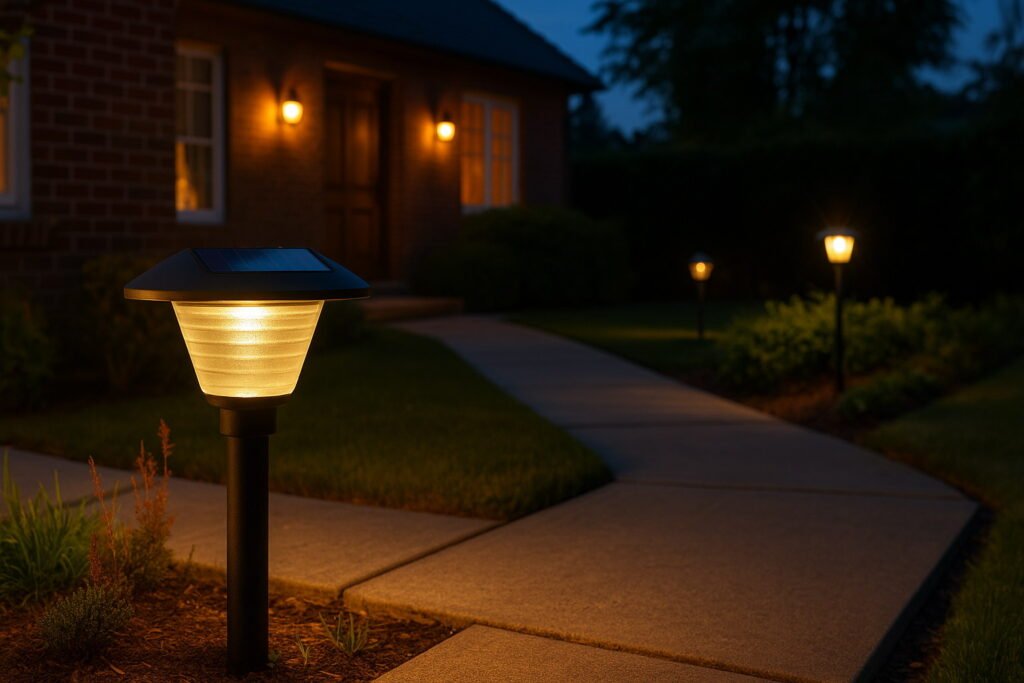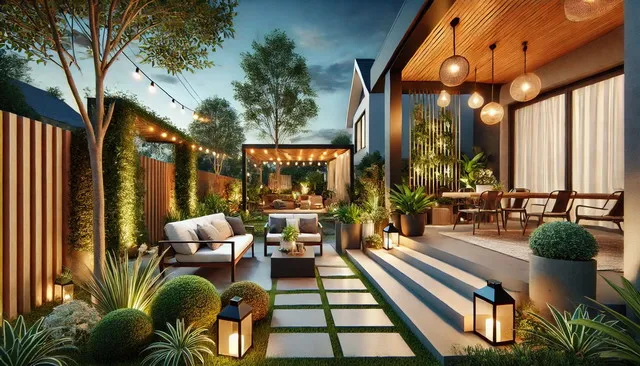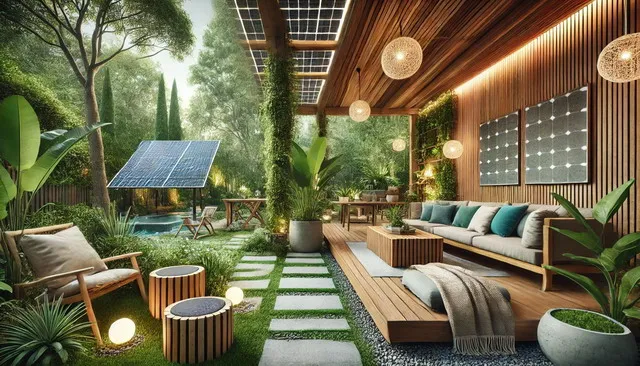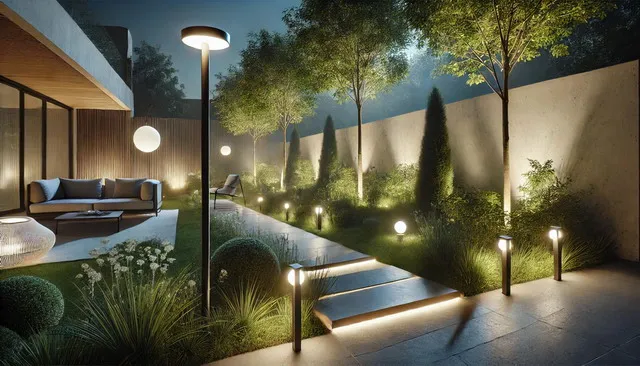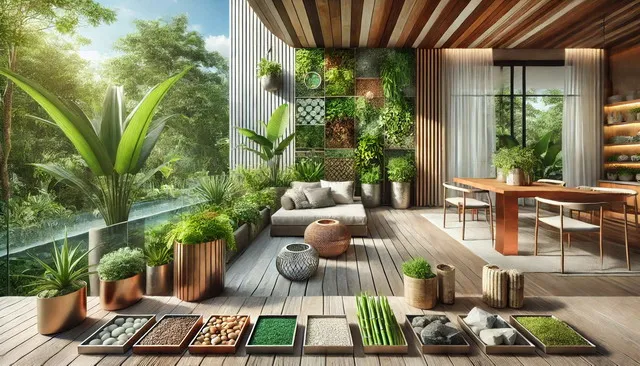As the global push for sustainability intensifies, homeowners, architects, and urban planners are turning to energy-efficient exterior lighting solutions to reduce energy consumption and carbon footprints. The year 2026 is poised to bring transformative advancements in how we illuminate outdoor spaces — blending smart technology, solar innovation, and low-impact design.
From LED breakthroughs to adaptive systems powered by artificial intelligence, exterior lighting trends in 2026 are no longer just about aesthetics. They’re about creating sustainable, functional, and eco-friendly environments that save energy without compromising style.
The Shift Toward Smarter, Greener Exteriors
Outdoor lighting has evolved far beyond simple floodlights and porch lamps. In 2026, there is a growing emphasis on creating systems that are smart, automated, and deeply energy-efficient.
Why 2026 is a Game-Changer
Several key forces are driving the change:
- Climate policies and net-zero targets are pushing for more energy-conscious building designs.
- Homeowners are more eco-aware, seeking technologies that reduce utility bills.
- Smart home ecosystems are more accessible and affordable, even for small properties.
“Lighting now accounts for about 15% of a household’s electricity usage. By upgrading to energy-efficient systems, this can be cut in half or more.” — U.S. Department of Energy
Benefits of Energy-Efficient Outdoor Lighting
- Lower electricity bills
- Improved safety and security
- Extended lifespan of lighting systems
- Reduced light pollution and environmental impact
LED Technology Advancements in 2026
LEDs (Light Emitting Diodes) remain at the forefront of energy-efficient lighting, and in 2026, they’re smarter, brighter, and longer-lasting than ever.
What’s New in LED Technology?
| Feature | 2020 Standard | 2026 Advancement |
| Luminous Efficacy | 90-110 lumens/watt | 140-180 lumens/watt |
| Average Lifespan | 25,000 hours | 50,000+ hours |
| Dimming Capabilities | Basic analog dimming | AI-assisted adaptive dimming |
| Heat Dissipation | Moderate | Advanced cooling materials |
These improvements mean that LEDs in 2026 consume less power while producing more light, reducing overall energy usage by up to 70% compared to halogen or CFL systems.
Where LEDs Shine Outdoors
- Garden path lights with focused beams
- Wall-mounted fixtures for entryways
- In-ground uplighting for landscaping
- Smart LED strips along fences and patios
“In 2026, we’re seeing LED chips that can adjust color temperature automatically based on the time of day or ambient light, improving comfort and efficiency.” — Lighting Design Institute, Europe
Energy-Saving Tip:
Choose Energy Star-rated LED fixtures for verified efficiency and durability. Look for models with integrated daylight sensors to prevent unnecessary usage.
Solar-Powered Lighting Goes Mainstream
Solar lighting has matured significantly. In 2026, it’s not just a niche trend — it’s a mainstream solution for energy-efficient exterior illumination.
Why Solar Lighting Is a Top Trend in 2026
- Improved panel efficiency: Photovoltaic panels now convert up to 25% of sunlight into energy (up from 18% in 2022).
- Better batteries: Lithium-iron phosphate batteries offer 2x longer life and maintain performance in colder climates.
- Affordable pricing: Mass production and material innovation have dropped costs by 30% over the past 3 years.
Ideal Applications for Solar Lighting
- Driveway marker lights
- Fence post caps with solar panels
- Solar-powered floodlights with PIR motion sensors
- Deck and patio lighting for ambiance
| Solar Lighting Type | Average Runtime (2026) | Charging Time (Sunlight Hours) |
| Motion-sensing wall light | 10–12 hours | 4–6 hours |
| Decorative garden stake lights | 8–10 hours | 4–5 hours |
| High-output security floodlight | 6–8 hours | 6–8 hours |
Pro Tip:
For maximum efficiency, install solar lights in areas that receive full sun for at least 6 hours a day. Clean the panels monthly to prevent dust buildup from reducing charging capacity.
Motion-Sensor and Adaptive Lighting Systems
One of the most effective ways to reduce outdoor energy use is by ensuring lights are only on when needed. In 2026, motion-activated and adaptive exterior lighting systems are setting new standards in efficiency.
Smarter Lighting, Lower Consumption
Modern motion-sensor lights now include:
- AI learning behavior to adjust brightness and duration based on typical movement patterns
- Advanced radar sensors offering greater accuracy than traditional infrared
- Pet-friendly detection to reduce false triggers from small animals
These adaptive systems are ideal for:
- Garage entrances and driveways
- Backyard walkways
- Commercial building perimeters
“Occupancy-based lighting control can reduce outdoor lighting energy usage by up to 80%.” — International Energy Agency, 2025 Report
Benefits of Adaptive Systems
- Lights stay off when not needed, saving power
- Increased safety and crime deterrence
- Seamless user experience, with hands-free operation
Smart Outdoor Lighting with IoT Integration
2026 marks the widespread adoption of IoT-connected exterior lighting, where efficiency meets intelligence. With app control, automation, and real-time monitoring, smart lighting is no longer futuristic — it’s standard.
Key Smart Features Driving Efficiency
- Geofencing: Lights turn on/off based on your location
- Schedule automation: Set by time, weather, or season
- Remote access: Control lights from anywhere via mobile apps
- Voice activation: Compatible with Alexa, Google Assistant, and Apple HomeKit
Popular Smart Lighting Systems in 2026
| Brand | Notable Feature | Energy-Saving Highlight |
| Philips Hue Outdoor | Multi-zone scheduling & dimming | Uses adaptive dimming to save up to 40% energy |
| Ring Smart Lights | Motion + camera integration | Lights only when motion is detected |
| Wyze Outdoor Light | App control with solar options | Adjustable brightness per zone |
These systems provide precision control over energy usage, making outdoor lighting more intelligent and sustainable than ever.
Low-Voltage Lighting Systems for Efficiency
Low-voltage lighting systems (typically 12V) are increasingly favored in 2026 for their energy-saving capabilities and safe installation.
Advantages of Low-Voltage Lighting
- Uses up to 60% less electricity than traditional line voltage systems
- Cooler operation, reducing fire risks and heat waste
- Easier to install and maintain, even DIY-friendly
Best Use Cases:
- Landscape accent lighting
- Under-deck lighting
- Stair and path illumination
“Low-voltage lighting provides the most efficient way to highlight your landscaping while keeping energy costs minimal.” — Green Builder Media
Tip:
Use transformers with built-in timers or photocells to automatically regulate when lights are on.
Dark Sky-Compliant Lighting for Eco-Efficiency
Beyond saving energy, outdoor lighting in 2026 also focuses on minimizing light pollution. Dark Sky-compliant fixtures direct light downward and use warmer color temperatures to protect night environments.
Why It Matters:
- Preserves wildlife habits (migratory birds, pollinators, nocturnal animals)
- Reduces glare and light trespass
- Improves sleep health by limiting blue light exposure
Features of Dark Sky Fixtures:
- Fully shielded designs
- Color temperature of 3000K or lower
- Precise beam control to avoid light spill
Certifications to Look For:
- International Dark Sky Association (IDA) Approved
- Energy Star + Dark Sky dual-certified models
This trend aligns aesthetics with ecological responsibility, a core pillar of exterior design in 2026.
Material Innovations in Fixtures and Luminaires
Fixtures themselves are becoming more energy-conscious, thanks to sustainable materials and smart engineering.
Key Material Innovations:
- Recycled aluminum and glass for eco-friendly durability
- Nano-coatings that reflect and diffuse light more efficiently
- Passive heat sinks made from ceramic compounds to prolong LED life
These material choices directly impact efficiency by enhancing light dispersion and preventing thermal loss — ensuring LEDs run cooler and longer.
Zoned and Layered Lighting Techniques
Another major trend in 2026 is strategically zoning and layering outdoor lighting to use less energy while improving function and ambiance.
Types of Outdoor Lighting Layers:
- Ambient: General, soft illumination (e.g., bollard lights)
- Task: Functional lighting (e.g., porch, entry, driveway)
- Accent: Decorative highlights (e.g., uplighting trees, sculptures)
How Zoning Saves Energy:
- Enables independent control of each area
- Prevents unnecessary lighting overlap
- Enhances visual hierarchy while using fewer fixtures
Case Study:
A homeowner in Melbourne reduced their exterior lighting energy use by 52% by implementing a 3-zone lighting layout with motion sensors and timers.
Government Incentives & Energy Efficiency Standards
With growing climate commitments, many governments are offering incentives for energy-efficient lighting upgrades.
2026 Efficiency Standards:
- Minimum efficacy requirements: e.g., 120 lumens per watt for new installations
- Restrictions on non-LED bulbs in many regions
- Mandatory motion or dusk-to-dawn sensors for public and commercial spaces
Incentive Examples:
| Country | Program | Benefit |
| USA | Energy Efficient Homes Tax Credit | Up to $1,200 for outdoor LED systems |
| UK | Green Homes Grant (Phase II) | 50% rebate for energy-saving outdoor upgrades |
| Australia | Sustainable Home Upgrades Fund | Interest-free loans for smart lighting |
Tip: Check your local regulations before purchasing or installing — you might be eligible for rebates or tax credits.
Tips for Choosing the Right Exterior Lighting for Efficiency
Selecting the right lighting system is crucial to long-term savings. Here’s a checklist to help you make informed decisions in 2026:
Must-Have Features:
- ✔ LED or solar-powered technology
- ✔ Smart sensor integration
- ✔ Dark Sky or Energy Star certification
- ✔ Low-voltage or solar compatibility
- ✔ Programmable controls or timers
Avoid:
- ❌ High wattage incandescent or halogen bulbs
- ❌ Fixtures without beam control
- ❌ Constant-on lighting without sensors
“Always balance efficiency with safety and design goals. Smart planning upfront will save you energy and money for years.” — Eco-Lighting Architects Group
Conclusion: Designing a Greener Nightscape in 2026
The future of outdoor lighting is not just brighter — it’s smarter, cleaner, and more energy-conscious. Whether you’re upgrading a patio, building a new home, or managing a commercial property, the exterior lighting trends in 2026 offer powerful tools to enhance beauty and reduce impact.
From solar-powered fixtures to IoT-integrated smart systems, the shift is clear: energy efficiency is now the gold standard. With proper planning, modern technology, and sustainable materials, you can transform your outdoor space into an eco-friendly oasis that shines brilliantly and responsibly.
